Checklists are powerful but deceptively so. They provide a sense of order, a mini win, and the important strikethrough of progress. But one of the biggest challenges in organizations is this progress does not always equal satisfaction — even when teams have knocked off dozens of items on their list in a week, they often find that their projects are off course, the outcomes are ambiguous, and they don’t even know if they are working towar d or meeting their goals.
The problem isn’t effort. It is connection. Checklists are static; they describe what needs to be done, but not why it matters or who is depending on it, or how it connects with other priorities. In a fast-moving, agile environment, the difference from being productive and just busy, is the connection. Lark closes the gap by ensuring tasks are not done in isolation, but that they also connect to broader outcomes.
Lark Tasks: anchoring responsibility
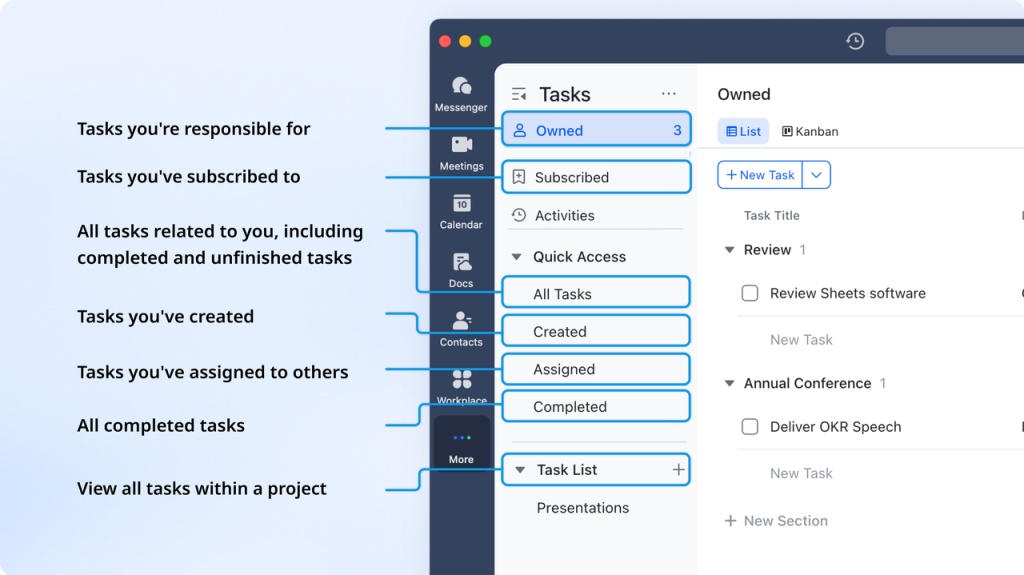
A to-do list is personal. Lark Tasks makes it collective. Instead of work disappearing into private notes, tasks are visible, assigned, and synced to Lark Calendar. Ownership is clear, deadlines are tracked, and progress updates are transparent. Tasks can be spun directly from a Messenger thread, added from a Doc, or shown in Calendar, capturing commitments in the flow of collaboration. What was once just a checklist item becomes a shared responsibility, keeping teams accountable and moving forward.
Lark Docs: context alongside action
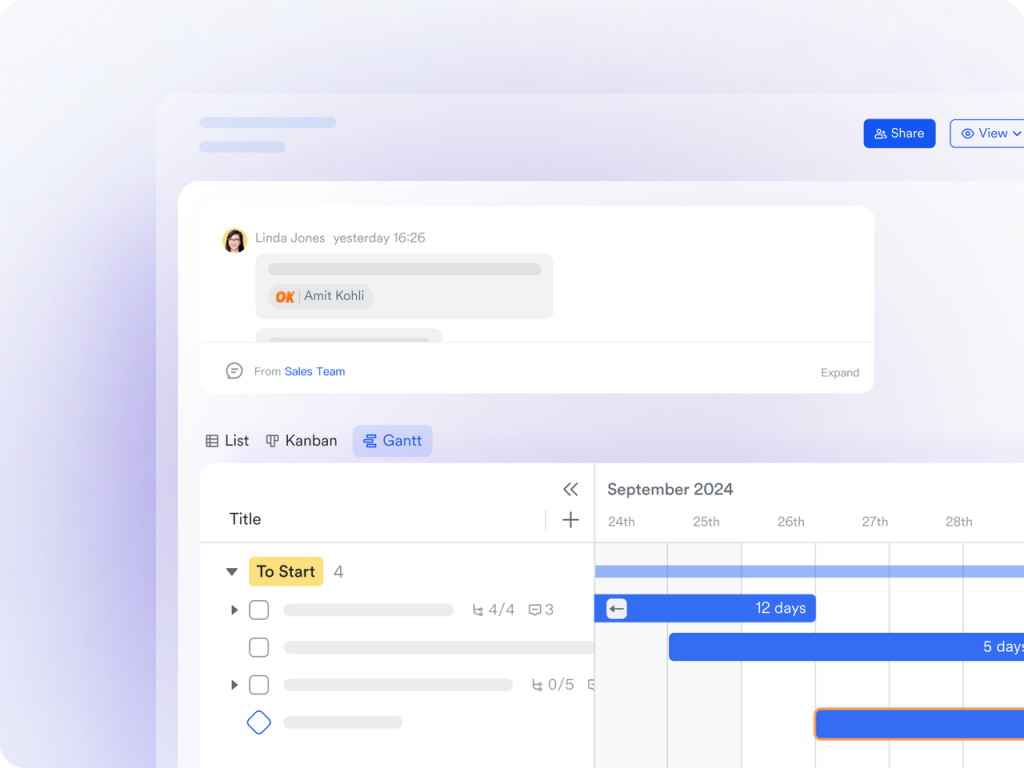
Tasks often lose impact when stripped of context. Why a deadline exists or what purpose it serves fades from view. Lark Docs addresses this by making the plan inseparable from the action. Project briefs, campaign outlines, or product notes can sit in a Doc, with tasks linked directly to relevant sections. Teams co-author in real time, debate priorities in comments, and adapt as strategies shift. The document isn’t background—it’s a living guide that ensures each task connects back to the bigger picture.
Lark Calendar: placing work in time
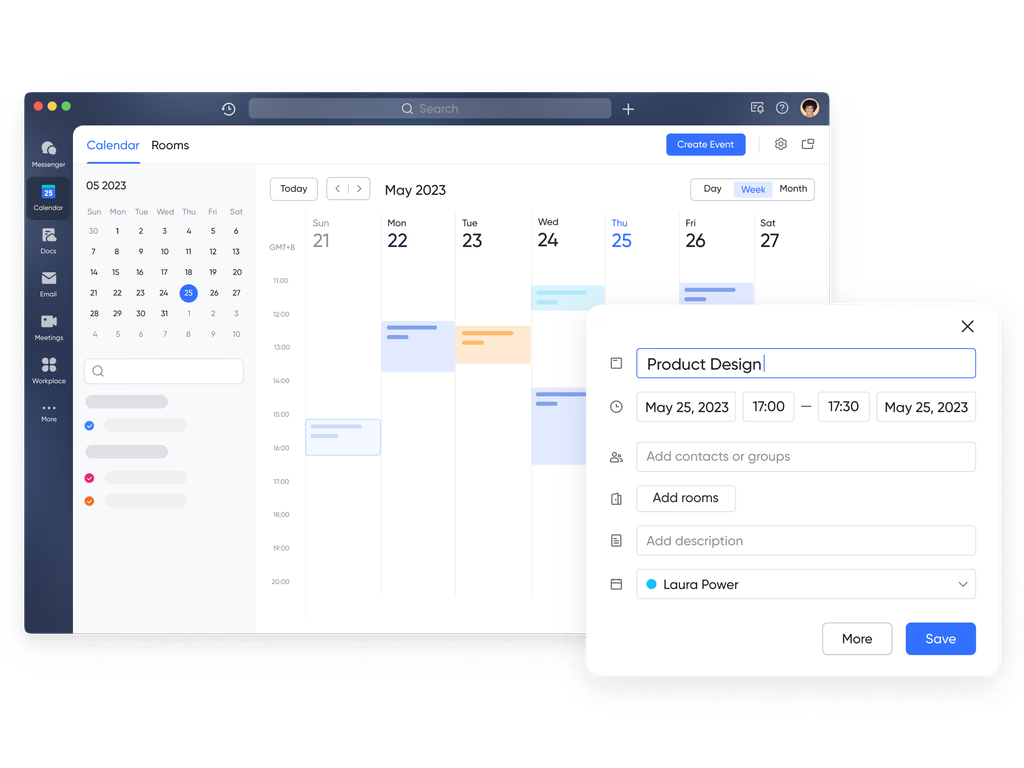
A checklist rarely shows when tasks should be done. Lark Calendar fills that gap by making deadlines visible in shared schedules. A testing task doesn’t just sit on someone’s list—it appears in the team’s calendar, alongside sprint reviews and stakeholder meetings. Everyone sees when tasks converge, where bottlenecks may form, and how small steps ladder into big milestones. Instead of treating tasks as loose items, Calendar ties them into time, giving teams a realistic sense of pace.
Lark Base: structuring work into systems
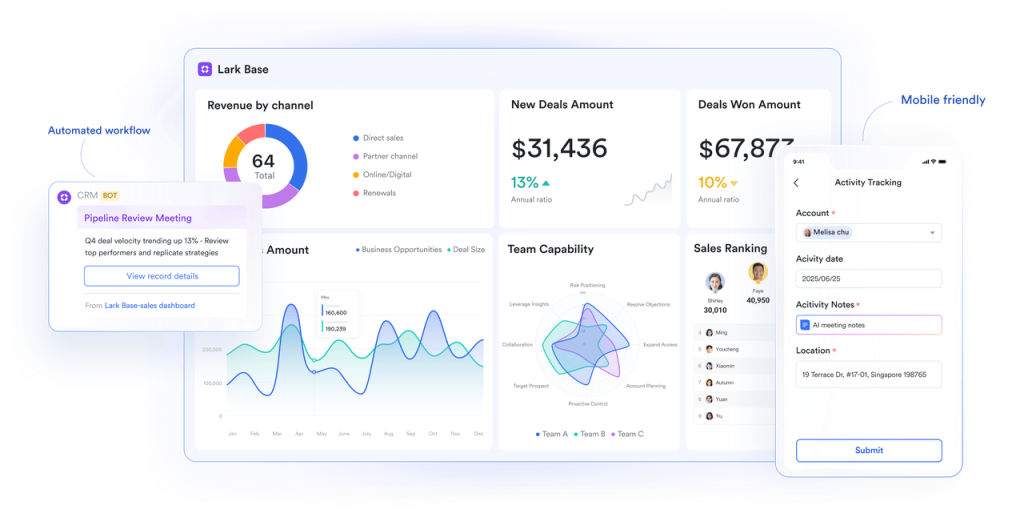
Tasks don’t become outcomes without structure. That’s where Lark Base comes in. Teams can design their own workflows—grids for detail, kanban boards for flow, or Gantt charts for timelines. Dashboards bring clarity to progress, and automations handle repetitive updates, freeing teams to focus on execution. Base doesn’t just store tasks; it organizes them into systems that scale. This is why many organizations see Lark itself as their trusted CRM app—not only managing customer relationships but structuring projects and operations in one connected hub.
Lark Approval: removing constraints
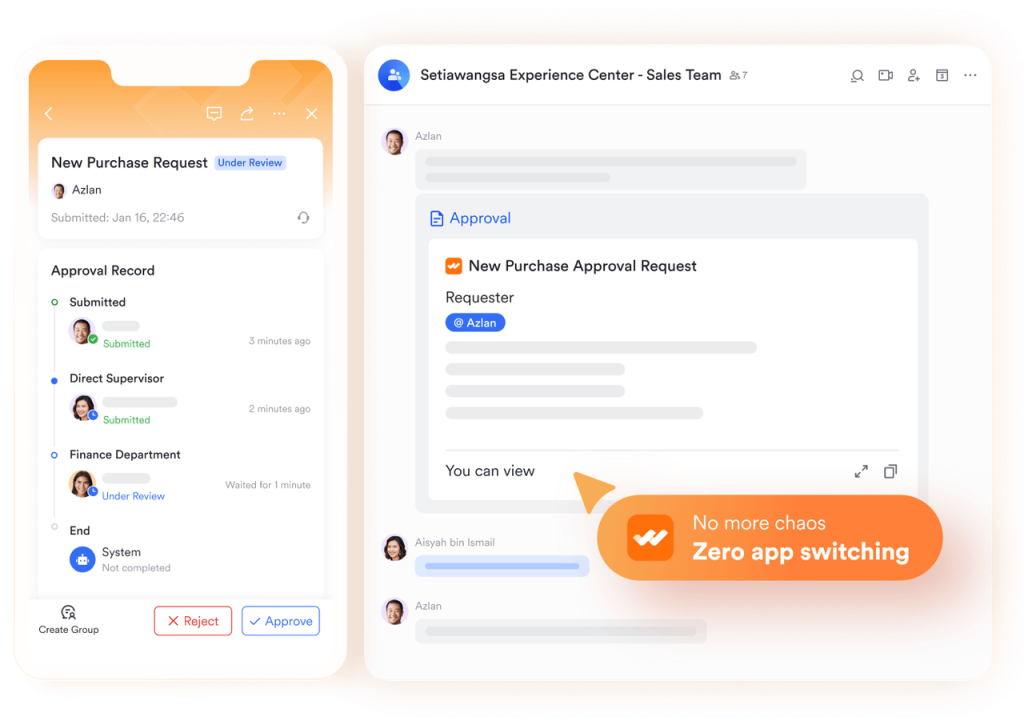
One of the most common reasons tasks stall is waiting for a decision. Approvals linger in email chains, requests bounce between managers, and progress slows. Lark Approval changes this dynamic. Requests arrive with the necessary details through customizable forms, reducing back-and-forth. Automated routing ensures they reach the right decision-makers instantly, while notifications surface approvals in Messenger so they can’t be missed. Approval makes sure that the flow of work doesn’t stop at a signature, making Lark an automatic business process management software.
Lark Messenger: turning conversations into execution

A chat can spark the most important tasks—a client asks for an update, a manager clarifies priorities, or a teammate spots a risk. But without a system, these conversations vanish into scrollback. With Lark Messenger, they become execution-ready. A message can turn into a task, an event, or a shared Doc in seconds. Threads keep context intact, pinned messages make instructions easy to revisit, and alerts ensure nothing urgent is overlooked. Messenger reduces the gap between talking and doing, ensuring tasks created in conversation don’t evaporate.
Lark OKR: showing the bigger picture
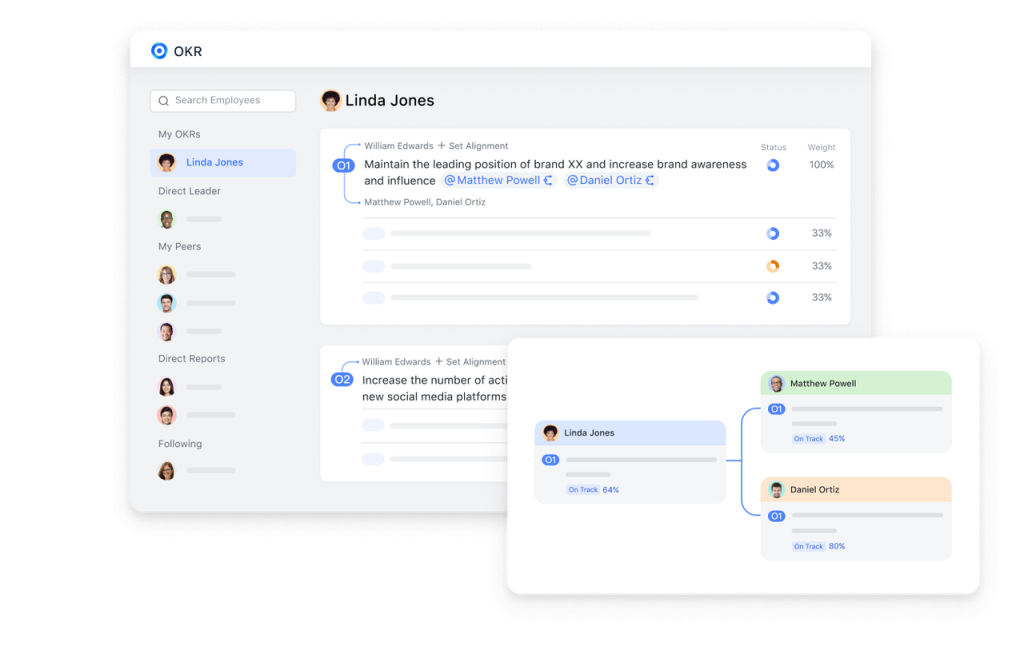
The final step in turning tasks into outcomes is visibility. Employees want to know how their daily actions contribute to larger goals. Lark OKR makes that connection visible. Company-wide objectives cascade into team and individual key results, with tasks tied directly to progress. Dashboards update automatically, showing not just what’s being done, but whether it’s making an impact. Instead of checklists that feel endless, employees see a clear line from their effort to organizational success.
Conclusion
Checklists have their place—they’re quick, simple, and motivating. But businesses can’t afford to confuse activity with achievement. Progress requires systems that connect tasks to purpose, context, and outcomes.
That’s what Lark delivers. Tasks capture commitments, Docs add clarity, Calendar aligns timing, Base structures execution, Approval removes bottlenecks, Messenger connects conversations, and OKR links effort to goals. Together, they take organizations beyond the checklist into meaningful outcomes.
In a crowded field of best project management tools, Lark stands out because it doesn’t just help teams complete tasks—it ensures that tasks evolve into results that matter.


